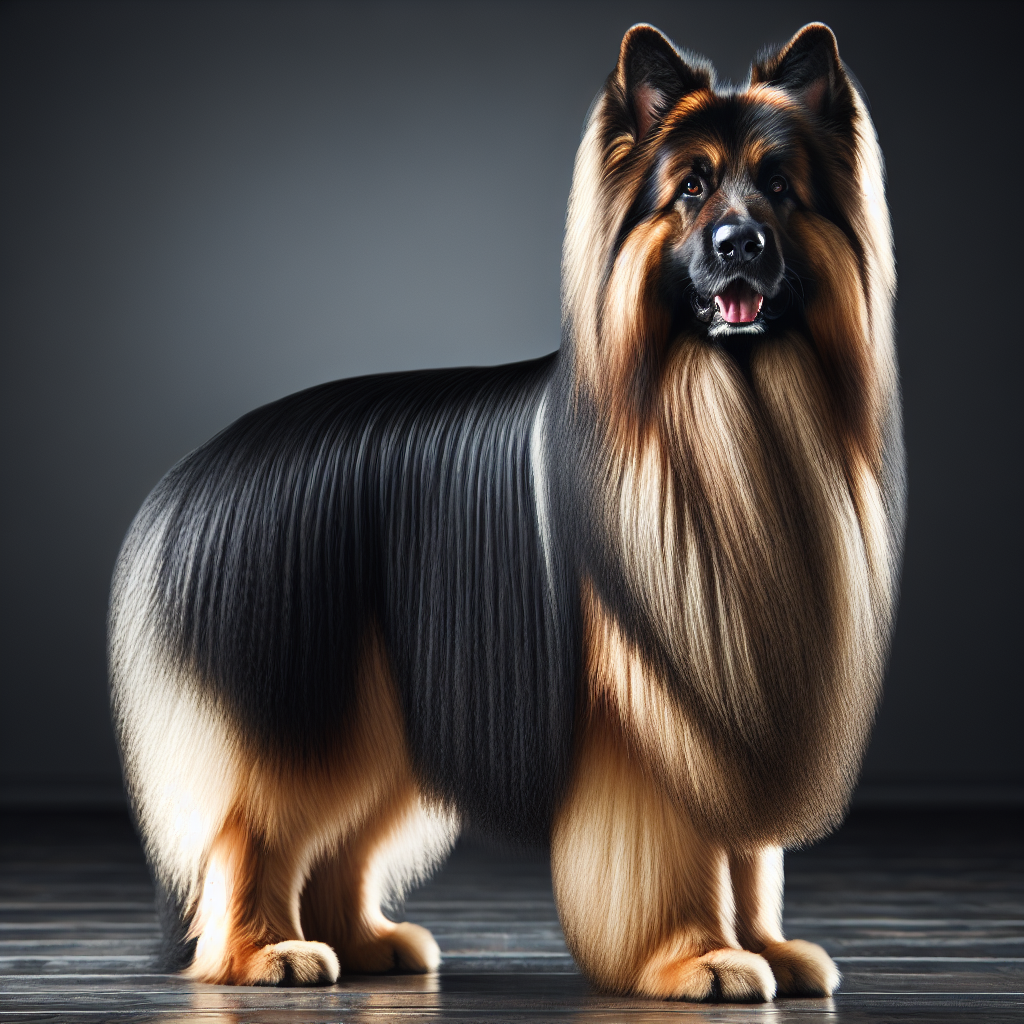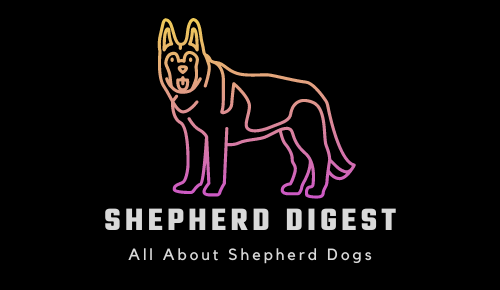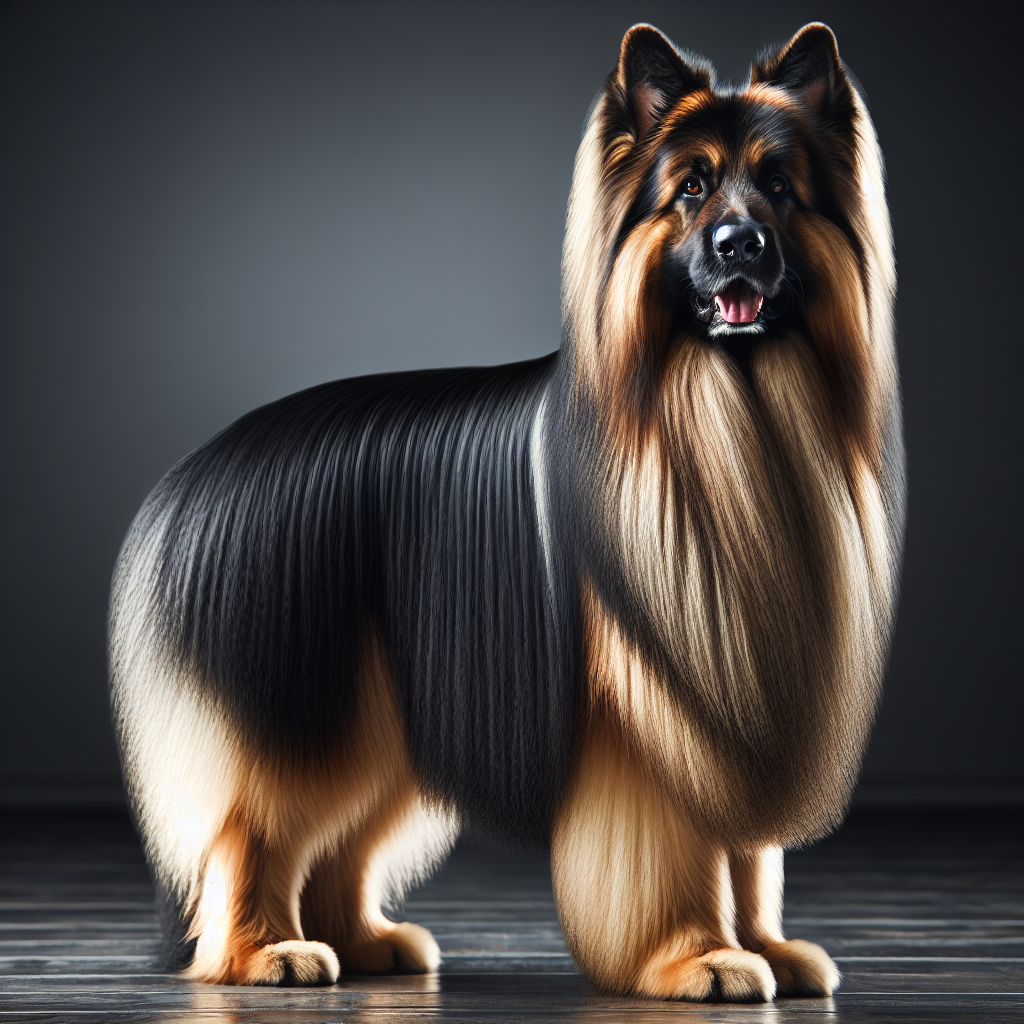If you find yourself the proud owner of a beautiful long-haired German Shepherd, you may be wondering how best to ensure their coat stays healthy and shiny. Proper grooming is essential for these majestic dogs, but fear not, with a bit of knowledge and the right tools, you’ll be able to maintain their long lustrous fur with ease. From regular brushing to managing shedding, you’ll discover the key to keeping your long-haired German Shepherd looking their best.

Brushing
Select the right brush
When it comes to grooming your long-haired German Shepherd, selecting the right brush is crucial. The breed’s dense and thick coat requires a brush that can penetrate through the fur and remove any tangles or loose hair. A slicker brush or a pin brush with long, wide-set bristles is recommended for this purpose. These types of brushes are designed to reach the undercoat without causing pain or discomfort to your furry friend.
Brushing technique
To ensure an effective brushing session, it is important to follow the proper technique. Start by sectioning your dog’s coat and work on one area at a time. Gently brush in the direction of hair growth, making sure to reach the undercoat. Be patient and use a gentle yet firm touch to avoid hurting your German Shepherd. If you encounter any tangles or mats, carefully work through them using a comb or your fingers. Regular and consistent brushing will help maintain a healthy and beautiful coat for your furry companion.
Brushing frequency
Regular brushing is essential for keeping your long-haired German Shepherd’s coat in top condition. Aim to brush your dog at least once a week, or even more frequently during shedding seasons. This will help remove loose hair, prevent matting, and promote healthy skin and coat. Additionally, regular brushing allows you to check for any skin issues, such as fleas or ticks, and address them promptly. Make brushing sessions a bonding experience with your German Shepherd, providing them with affection and reassurance throughout the process.
Bathing
Choosing the right shampoo
When it comes to bathing your long-haired German Shepherd, choosing the right shampoo is key. Opt for a high-quality dog shampoo that is specifically formulated for long-haired breeds. These shampoos often contain ingredients that help nourish and protect the coat, leaving it soft and shiny. Avoid using human shampoos, as they can strip the natural oils from your dog’s skin, leading to dryness and irritation.
Preparing the bathing area
Before giving your German Shepherd a bath, it’s important to prepare the bathing area. Make sure to secure your dog in the tub and place a non-slip mat at the bottom to prevent accidents. Gather all the necessary supplies, such as towels, a brush or comb, and the chosen shampoo. Adjust the water temperature to lukewarm, as extreme temperatures can be uncomfortable for your furry friend. Having everything ready beforehand will ensure a smooth bathing experience for both you and your German Shepherd.
Bathing technique
When it’s time to bathe your long-haired German Shepherd, start by wetting their coat thoroughly with lukewarm water. Apply the shampoo and lather it in, being careful to avoid getting any into their eyes or ears. Gently massage the shampoo into their coat, focusing on any areas that may be dirty or have built-up debris. Rinse off the shampoo completely, ensuring that no residue remains. Towel dry your German Shepherd by gently patting their coat, and allow them to air dry completely before brushing them to avoid any tangles. Remember to praise and reward your furry friend for their cooperation throughout the bathing process.
Drying
Towel drying
After bathing your long-haired German Shepherd, it’s time to dry them off. Start by using a large, absorbent towel to gently pat their coat, removing excess moisture. Avoid rubbing vigorously, as this can lead to tangles or mats. If your dog’s coat is still damp, you can repeat the towel drying process until most of the moisture is gone. Towel drying is a gentle and effective method that helps prevent unnecessary stress or discomfort during the grooming process.
Using a blow dryer
If your long-haired German Shepherd is comfortable with the noise and sensation of a blow dryer, you can use it to speed up the drying process. Make sure to use a low heat setting and keep the dryer at a reasonable distance from your dog’s coat to prevent overheating or burning. Use your hands or a brush to guide the air through the fur, ensuring that it reaches the undercoat as well. Stay attuned to your dog’s comfort level and adjust the settings accordingly. It’s essential to introduce and acclimate your German Shepherd to the blow dryer gradually to avoid causing any anxiety or fear.
Nail Trimming
Gathering the necessary tools
Trimming your long-haired German Shepherd’s nails requires the right tools. Invest in a high-quality pair of dog nail clippers or a nail grinder that is suitable for your dog’s size. It’s important to have styptic powder or cornstarch on hand as well, in case you accidentally cut the quick and cause bleeding. Familiarize yourself with the tools and their proper usage before starting the nail trimming process.
Trimming technique
To trim your German Shepherd’s nails, hold their paw gently but securely. Use the clippers or grinder to remove small amounts of the nail at a time, being cautious not to cut too close to the quick, which is the pink area inside the nail that contains blood vessels and nerves. Trim the nails at a gradual angle, avoiding a straight cut that can cause splintering. Take breaks in between each nail to ensure your dog remains calm and relaxed throughout the process. If you’re unsure about how much to trim, it’s always best to consult with a professional groomer or your veterinarian.
Avoiding overcutting
One of the most critical aspects of nail trimming is to avoid overcutting. Cutting into the quick can be painful for your German Shepherd and may result in bleeding or infection. If you’re uncertain about where the quick is located within the nail, opt for smaller trims or choose a nail grinder that gradually files down the nails. Regular trimming sessions, coupled with positive reinforcement and patience, will help you become more confident and proficient in this essential grooming task.
Ear Cleaning
Gathering the necessary supplies
Cleaning your long-haired German Shepherd’s ears requires the right supplies. Before you start the process, gather a dog-specific ear cleaner, cotton balls or gauze pads, and treats to reward your dog for their cooperation. It’s essential to have these items within reach to make the ear cleaning experience as comfortable and stress-free as possible.
Cleaning technique
To clean your German Shepherd’s ears, start by moistening a cotton ball or gauze pad with the ear cleaner. Gently lift one of your dog’s ears and hold it up to expose the ear canal. Gently wipe the visible part of the canal, ensuring not to insert the cotton ball too deeply. Avoid using cotton swabs, as they can push any debris further into the ear, potentially causing damage. Repeat the process with the other ear, and make sure to dispose of the used cotton balls or gauze pads promptly. For a deeper clean or if you notice any signs of infection, consult your veterinarian for further guidance.
Preventing infections
Regular ear cleaning helps prevent infections and keeps your German Shepherd’s ears healthy. However, it’s crucial to be mindful of any signs of discomfort, excessive wax buildup, or an unpleasant odor coming from your dog’s ears. If you notice any of these symptoms or if your dog displays signs of pain or irritation during ear cleaning, consult your veterinarian. They can examine your German Shepherd’s ears and recommend appropriate treatment or further care to prevent any potential infections.
Teeth Cleaning
Choosing a dog-friendly toothpaste
Maintaining your long-haired German Shepherd’s oral health is essential, and choosing a dog-friendly toothpaste is the first step. Human toothpaste can be harmful to dogs if ingested, so it’s vital to select a toothpaste specifically formulated for dogs. These toothpaste options come in various flavors that dogs find appealing, making the brushing experience more enjoyable for both you and your furry friend.
Introduction to tooth brushing
Introducing your German Shepherd to tooth brushing should be a gradual process to create positive associations. Start by letting your dog taste a small amount of the toothpaste to get them accustomed to the flavor. Once they are comfortable with the taste, gently lift their lips and start brushing their teeth using a soft-bristled toothbrush or a finger toothbrush. Start with short brushing sessions and gradually increase the duration as your dog becomes more comfortable. Remember to reward your German Shepherd with praise and treats after each successful brushing session.
Using a toothbrush or alternative method
When it comes to brushing your German Shepherd’s teeth, you have a few options. Using a toothbrush specifically designed for dogs can be effective in reaching all areas of the mouth. However, if your dog is not comfortable with a toothbrush, there are alternative methods available. Finger toothbrushes or dental wipes can be used to clean your dog’s teeth and gums. These options allow for easier control and may be more tolerable for your German Shepherd. Experiment with different tools to find the one that works best for you and your furry friend.
Trimming the Tail
Trimming technique
Trimming your long-haired German Shepherd’s tail requires precision and care. Start by gathering a pair of blunt-tipped grooming scissors specifically designed for trimming fur. Hold your dog’s tail firmly but gently, and using the scissors, carefully trim any excess fur or knots. Take your time and make gentle, small cuts to avoid accidentally cutting the skin or causing any injuries. Periodically step back to assess the overall look and balance of the tail. If you’re unsure about trimming the tail yourself, it’s always best to consult a professional groomer for assistance.
Preventing injuries during trimming
Diligence and caution are necessary to prevent any injuries while trimming your German Shepherd’s tail. Ensure that your dog is relaxed and comfortable throughout the process, as any sudden movements may increase the risk of accidental cuts. Keep the scissors away from your dog’s body and be mindful of your hand placement while trimming. If your German Shepherd becomes anxious or agitated during the trimming process, take a break and try again later. Safety should always be the top priority when grooming any part of your furry friend, including their tail.
Maintaining the Mane
Dealing with matting
As a long-haired breed, matting can be a common challenge for your German Shepherd. Regular maintenance and detangling strategies can help prevent and manage matting effectively. Start by carefully combing through your dog’s coat, using a wide-toothed comb or a dematting tool specifically designed for long-haired breeds. Gently work through any tangles or mats, starting from the ends of the hair and working your way up to the roots. If the matting is severe, consider seeking professional grooming assistance to ensure the mats are safely and properly removed.
Regular maintenance
To maintain your long-haired German Shepherd’s mane, establish a grooming routine that includes regular brushing and combing sessions. Aim to brush your dog’s coat at least once a week, or more frequently if needed, to prevent any tangles or matting. Be thorough in reaching all areas of their coat, paying extra attention to the areas prone to matting, such as behind the ears and on the underbelly. Regular maintenance will help keep your German Shepherd’s coat healthy, beautiful, and free of painful tangles.
Using detangling sprays
Detangling sprays can be a helpful tool in maintaining and managing your German Shepherd’s mane. These sprays are designed to soften the hair and make it easier to brush through, reducing the risk of tangles or matting. When using a detangling spray, apply it to the areas with tangles or mats and gently work through the hair with a comb or your fingers. Be cautious not to overuse the product, as excessive buildup can make the coat look greasy. Opt for high-quality, dog-specific detangling sprays for best results.
Professional Grooming
Benefits of professional grooming
While regular home grooming is essential, there are numerous benefits to taking your long-haired German Shepherd to a professional groomer. Professional groomers have the knowledge and experience to handle different coat types and provide specialized care. They can trim, shape, and style your dog’s coat according to breed standards or your specific preferences. Additionally, professional grooming may include additional services such as deep coat conditioning, flea and tick treatment, and thorough ear cleaning. Taking your German Shepherd to a professional groomer can save you time and ensure that your dog’s grooming needs are expertly met.
Finding a reliable groomer
Finding a reliable and experienced groomer for your long-haired German Shepherd is crucial. Start by asking for recommendations from trusted friends, family members, or your veterinarian. Research local grooming salons, read reviews, and visit the facilities to observe the cleanliness and professionalism. Look for groomers who have experience with long-haired breeds and are knowledgeable about their specific grooming requirements. Ease your dog into the grooming process by scheduling a few initial visits for simple services, such as nail trimming or a bath, to assess how well your German Shepherd responds to the groomer and their techniques.
Communication with the groomer
Clear communication with your chosen groomer is key to ensure that your long-haired German Shepherd receives the care and grooming you desire. Before each grooming session, discuss your expectations, any specific concerns, and the desired outcome with the groomer. Provide information about your dog’s behavior, any recent health issues, or any sensitive areas that need special attention. Regularly evaluate the grooming results and address any concerns or changes you would like to see. Good communication and feedback will foster a positive grooming relationship with your chosen groomer and help maintain your German Shepherd’s coat in top condition.
Grooming Tools
Essential grooming tools
When it comes to grooming your long-haired German Shepherd, having the right tools is essential. Here are a few essential tools to have in your grooming kit:
- Slicker brush or pin brush: These brushes are ideal for removing loose hair and tangles in your dog’s thick coat.
- Dog-specific toothbrush and toothpaste: Maintaining your dog’s oral health requires a toothbrush and toothpaste designed for dogs.
- Dog nail clippers or a nail grinder: These tools are necessary for keeping your dog’s nails at an appropriate length.
- Cotton balls or gauze pads: These are useful for cleaning your dog’s ears and removing any debris.
- Blunt-tipped grooming scissors: These scissors are essential for trimming your dog’s fur, including their tail.
Optional tools for specific needs
In addition to the essential grooming tools, there are optional tools that can be beneficial for specific grooming needs. Consider adding the following tools to your grooming kit:
- Dematting tool: This tool is useful for gently removing tangles and mats from your dog’s coat, preventing discomfort and potential skin issues.
- Detangling spray: A detangling spray can help soften and smoothen your dog’s coat, making it easier to brush through and reducing the risk of matting.
- Dog dryer: If your German Shepherd has a thick coat that takes a long time to air dry, a dog dryer can help speed up the drying process.
- Styptic powder or cornstarch: These products are essential for stopping bleeding in case you accidentally cut your dog’s nails too short.
Proper tool maintenance
To ensure the longevity and effectiveness of your grooming tools, proper maintenance is crucial. After each grooming session, remove any hair or debris from the brushes, comb, or clippers. Clean the tools with mild soap and warm water to remove any product residue or dirt. Dry them thoroughly before storing them in a clean and dry location. Regularly inspect the tools for any signs of wear or damage and replace them as needed. Proper maintenance is not only important for the lifespan of your grooming tools but also for the health and comfort of your long-haired German Shepherd.

